Roy Lichtenstein (New York, 1923 - 1997) was one of the leading artists of American pop art along with Andy Warhol. Inspired by newspaper prints and comic books, particularly those with the typographic screen (a printing system with characteristic polka dots, which vary their color) that characterizes his works, the artist intended to recreate a personal vision of reality, reusing printing processes in his art. Not only prints: after his great success in the early 1960s he would continue to produce works reaching over 5,000 paintings, prints, and even sculptures and murals.
Art historian Jack Cowart describes Lichtenstein’s compositions as “a rich dialogue of forms, all intuitively modified and untethered from their nominal sources.” The idea of untying forms surely echoed his passion for the works of Picasso: Lichtenstein said that Guernica (1937) was his favorite painting, and in fact it was in Lichtenstein’s early years of art studies that the painting was on long-term loan at the Museum of Modern Art in New York.
This passion for European art would come to the fore in an interview with Aprile Bernard and Mimi Thompson for Bomb magazine published in January 1986. Aprile asked Roy if he felt he was a true American, and he replied, “Mainly but not entirely. I think I look at American things somewhat through European eyes, not because I’m European, but because the history of art is usually oriented toward the European view, and that’s why I was educated. So I think real American objects look as bizarre to me as they would look to a European, and that’s the interest.”
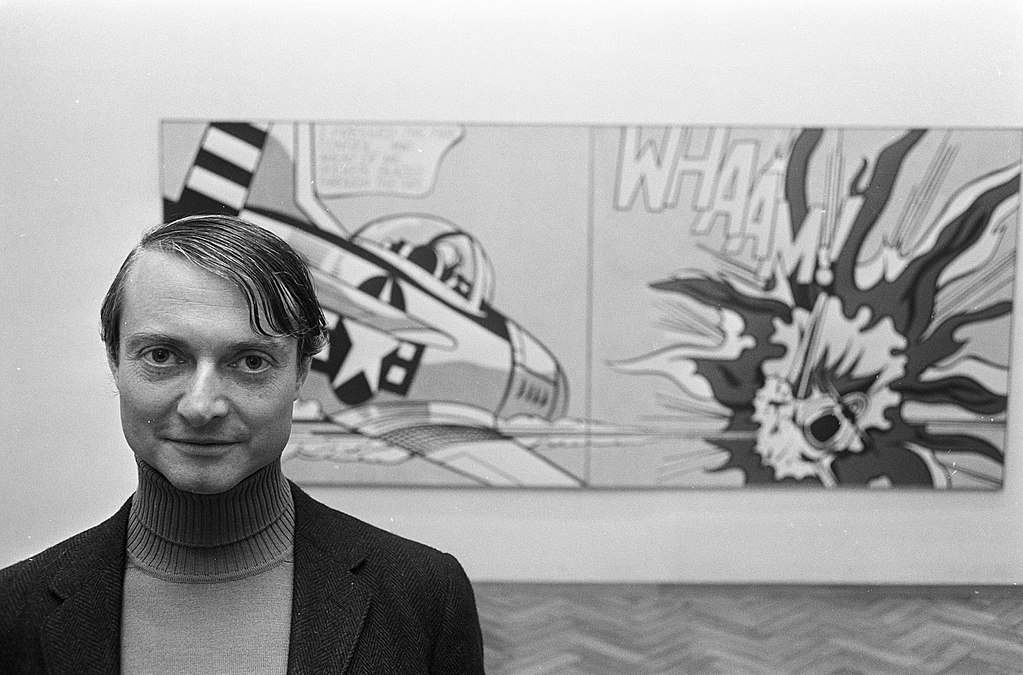
Born in New York City on October 27, 1923, Roy Lichtenstein was the eldest son of Milton Lichtenstein and Beatrice Werner. his father was a successful real estate agent, while his mother Beatrice was a homemaker. His mother had trained as a pianist and educated Roy and his sister Rénee in the culture of museums and concerts of 1930s New York. From an early age Roy showed a talent for artistic pursuits. As a teenager he spent much time between the American Museum of Natural History and the Museum of Modern Art, thus improving his drawing. During those same years he also studied piano and clarinet, becoming passionate about jazz music, a passion he would carry on throughout his life.
He graduated in 1940: that summer he took a course in drawing and painting from the model, with Reginald Marsh at the Art Students League in New York. In September of that year he entered The Ohio State University in Columbus. During his studies Roy was particularly influenced by the ideas of his professor Hoyt L. Sherman: Lichtenstein was opposed to the idea that a series of lines (a drawing) could be “considered brilliant, and someone else’s, which may have looked better to you, was instead held in no regard by almost everyone.” This idea was due to the use of the flash room (a dark room where images were briefly projected on the screen) from where students had to draw what they saw in the shortest possible time, an exercise in copying.
In February 1943 Lichtenstein had to enlist because of World War II, in the U.S. Army, and in 1945 he was sent to Europe. He was part of the infantry and took part in missions in France, Belgium and Germany. During this time Roy continued to draw. When peace was declared he decided to go to study at the Sorbonne in Paris. He transferred in October 1945 and enrolled in French language and civilization courses. His return to New York in 1946 was timely due to the serious illness of his father, who died a few weeks after his arrival. He finished his studies at Ohio State University, where he was recalled by the faculty in a teaching position.
Lichtenstein began exhibiting his work in the Cleveland Cooperative Art Gallery, where he met Isabel Wilson Sarisky (1921-1980), to whom he married in 1949. In the late 1940s and early 1950s Roy began working on a series of printed iconographies. In the wake of Paul Klee ’s works (which repurposed primitive painting) Lichtenstein also tried to do the same, mocking the reworking of historical genre paintings of 19th-century America, drawing inspiration from Cubist art, emphasizing the faux primitive style, repurposed the figures of cowboys and Indians as in Cowboy on Horseback.
In 1951 the artist’s contract at the university was not renewed. He and his wife moved to Cleveland where her career as a decorator was blossoming precisely because of Cleveland’s wealthy families. Roy found himself various part-time jobs including industrial draftsman and furniture designer. In 1951 she had her first solo exhibition at Carleback Gallery in New York, followed by representation with John Heller Gallery from 1952 to 1957. Between 1954 and 1956 he became the father of two children. He returned to teaching first as an assistant professor at the State University of New York at Oswego, then as a professor of industrial design. In 1960 he accepted a position as an assistant professor at Douglass: it was here that Roy returned to old ideas and began working on his works again. In 1961 he began to develop works by mixing cartoon figures with abstract backgrounds with works such as Look Mickey or Popeye, thus initiating elements that would characterize Pop Art, such as the idea of being ironic about the culture around us, and taking images out of their contexts to emphasize their real aspects.
These works reached Ivan Karp, director at the time of the Leo Castelli Gallery. Castelli was New York’s leading dealer in contemporary art. Karp was immediately attracted to Lichtenstein’s works, and after some consideration Castelli chose to represent Roy. The first exhibition was from February 10 to March 3, 1962, bringing Lichtenstein’s cartoon paintings to the general public: the show sold out, making him famous. This was followed by several exhibitions around the country along with artists such as Warhol, Robert Rauschenberg and was considered brilliant, and that of someone else, who might have seemed better James Rosenquist, Pop artists whose art shocked critics by taking attention away from the abstract expressionism that was at the center of the New York School in those years.
In the 1970s Roy and his wife moved to Southampton, New York. The new home led Lichtenstein to search for new forms and expressive techniques. In this decade the search for new forms of expression led to the Mirror series that played with mirrors and light, his sculptures bringing two-dimensional elements (his drawings) to full-length works (sculptures visible from all sides) such as Cup and Saucer I . In the 1980s he also created public sculptures around the world in Miami Beach, Columbus, Minneapolis, Paris, Barcelona and Singapore. In the 1990s he turned to large series such as Interior Views, combining his ideas with art and design objects by other artists, always maintaining his iconic style as in Interior with Yves Klein Sculpture. In August 1997 Lichtenstein fell ill with pneumonia, and died of complications from the disease on September 29 of that year, at the age of 73 in New York City.

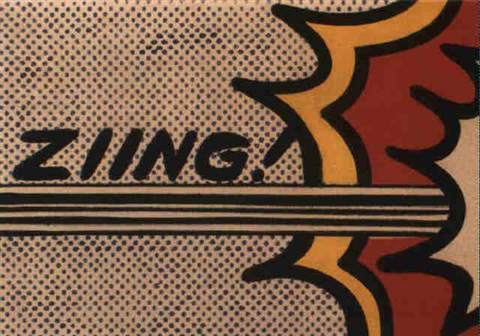
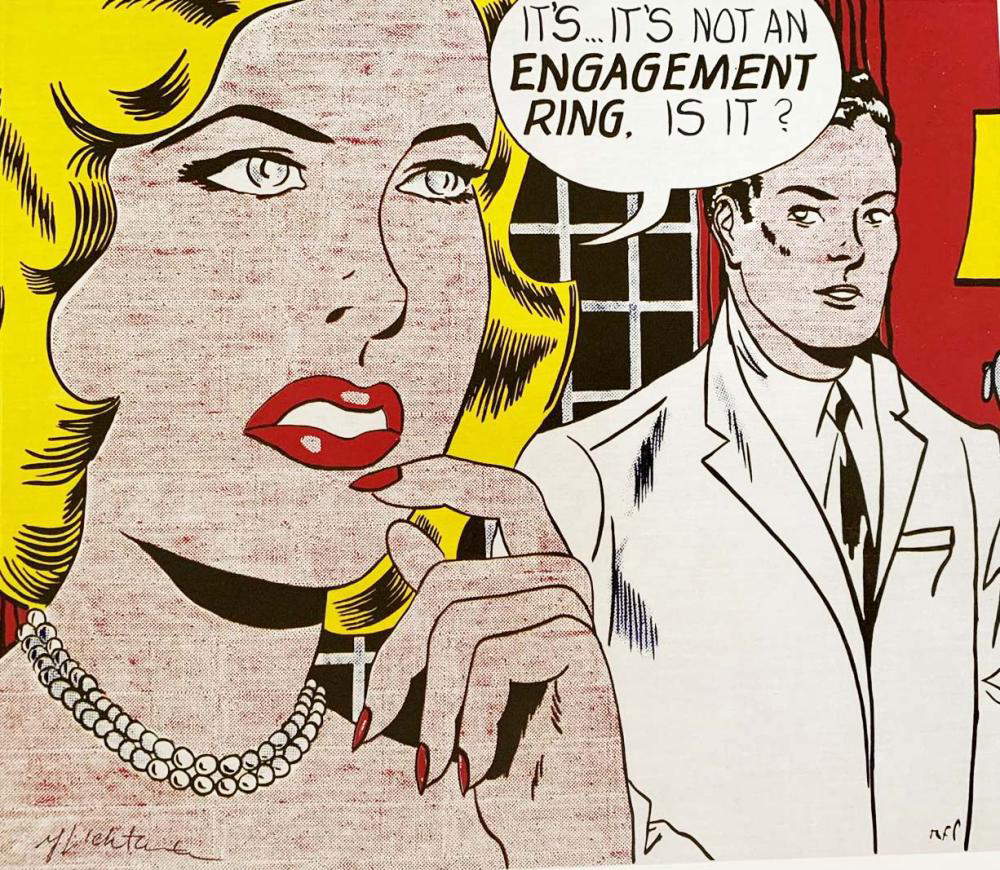
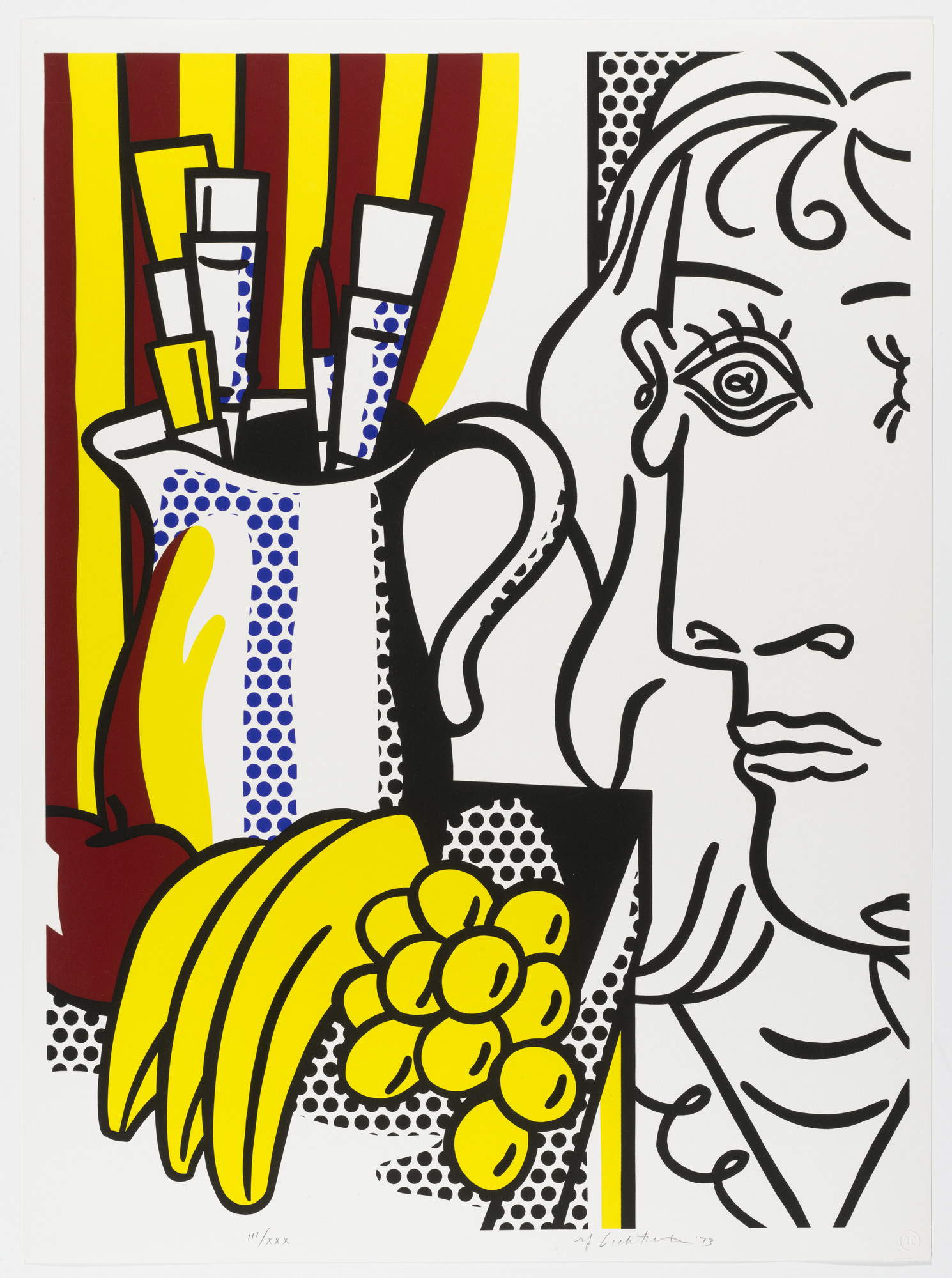
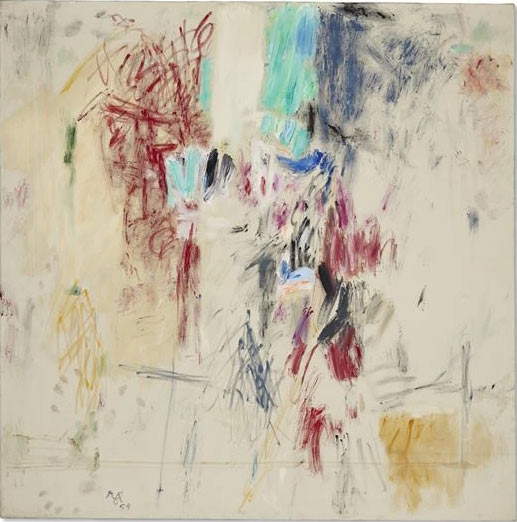
Roy Lichtenstein’s unmistakable style has become iconic: the typical typographic screen that the artist uses to give variations in color will be the hallmark of his art, which he began to use in the early 1960s with Viip or Ziing, whereas before, comic book scenes taken out of their context were simply painted with oil colors spread without shading, such as The Ring (engagement).
Before the 1960s, Roy painted by looking to artists who were part of Cubism such as Picasso and Klee. Between the 1940s and 1950s he would be precisely concerned with reworking the style of these artists in his own way, especially with Picasso from whom he took the vision of space (cubism) but also the elements, re-proposing them at many different times in his career, for example, with Woman Knitting (c. 1948) to Still life with Picasso (1972).
In the late 1950s, Lichtenstein’s style changes: we have images with long colored brushstrokes, brushstrokes enclosed in squares as if they were various pieces of color reassembled at random in the painting, and we see these color experiments in the Untitled series between 1959 and 1960. Roy Lichtenstein’s style was defined around 1961 precisely with the discovery of comics, which for him meant a new way of communicating. The artist would take a scene from a comic strip and take it out of its context, and so that scene would take on another meaning while losing the original one, as in Hopeless (1963). Playing with the typographic screen by using it for “purely formal reasons,” as he put it, he also repurposed works by great masters such as, for example, Claude Monet ’s Rouen Cathedral Seen at Three Different Times of Day (1940), which became Rouen Cathedral(Seen at Three Different Times of Day) of 1969, the exact same painting but monochromatic and with thedotted effect, thus reworking a masterpiece ofImpressionism by giving it a more posterist and contemporary slant.
Lichtenstein would continue to paint always in the same style changing the subjects and modifying the colors that become brighter and brighter, bringing it back in exactly the same way in sculpture, as in Coup de Chapeau I which goes from being a project on ink to a sculpture, or as in Brushstroke Head I where we see the classic female face of his comic strips reproposed in a fragmented way.
A major change in Roy Lichtenstein’s style can be seen in the Landscape series of the late 1990s. In the Landscape series the artist takes the graphic screen to extremes: the dotted effect is juxtaposed with fields of flat color given by oil paints, thus recreating landscapes without the typical black graphic line that distinguished his works as, for example, in Landscape with River (1996). These Chinese landscapes are taken from Song Dynasty scroll paintings.
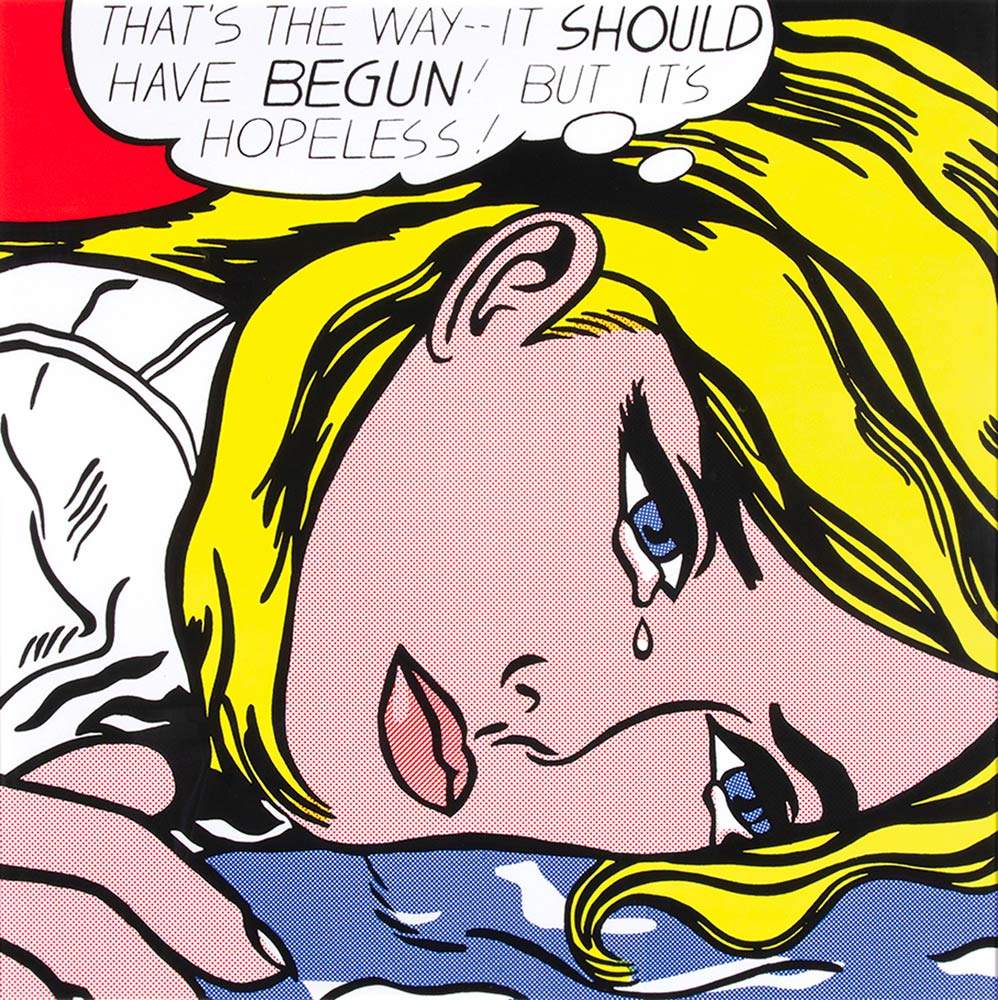
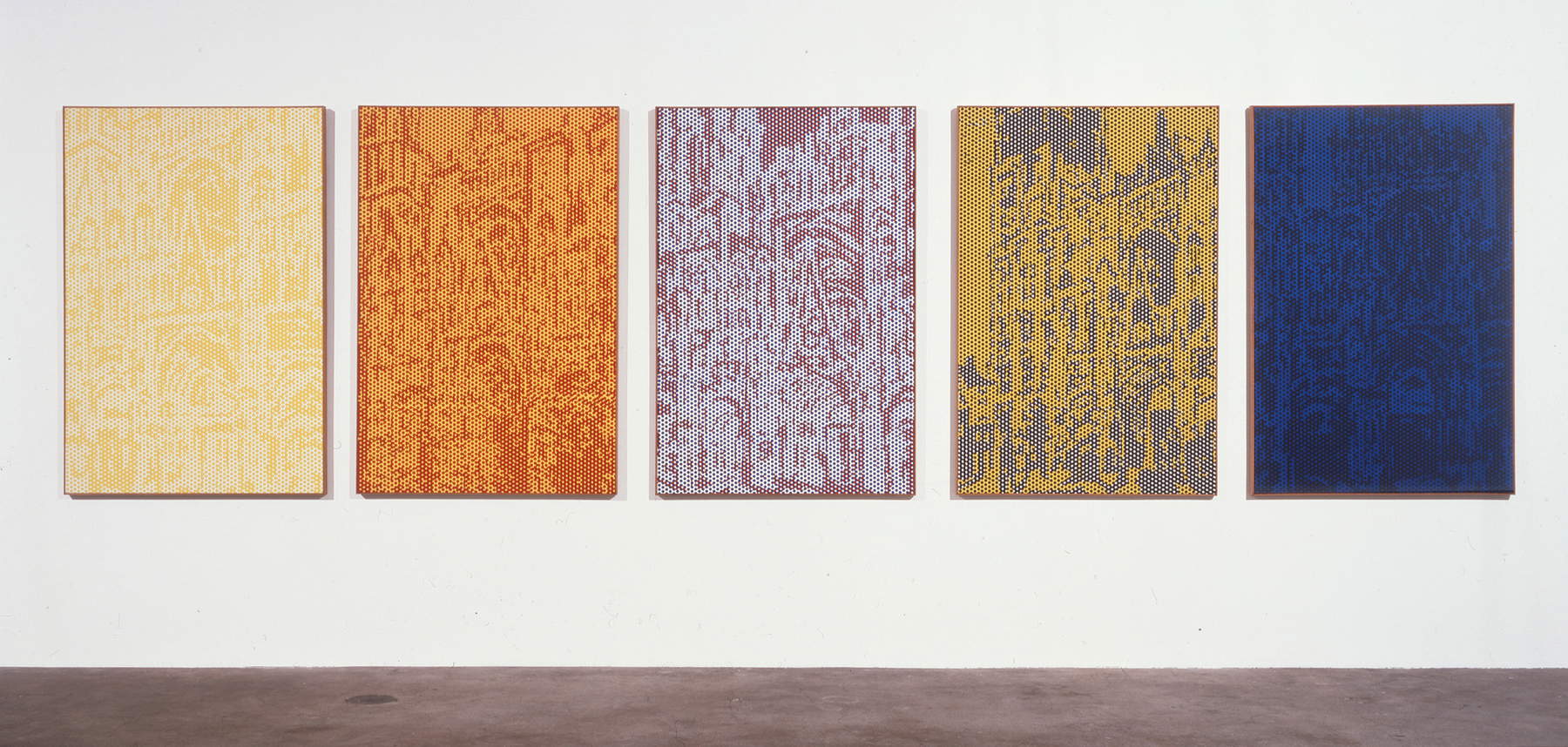
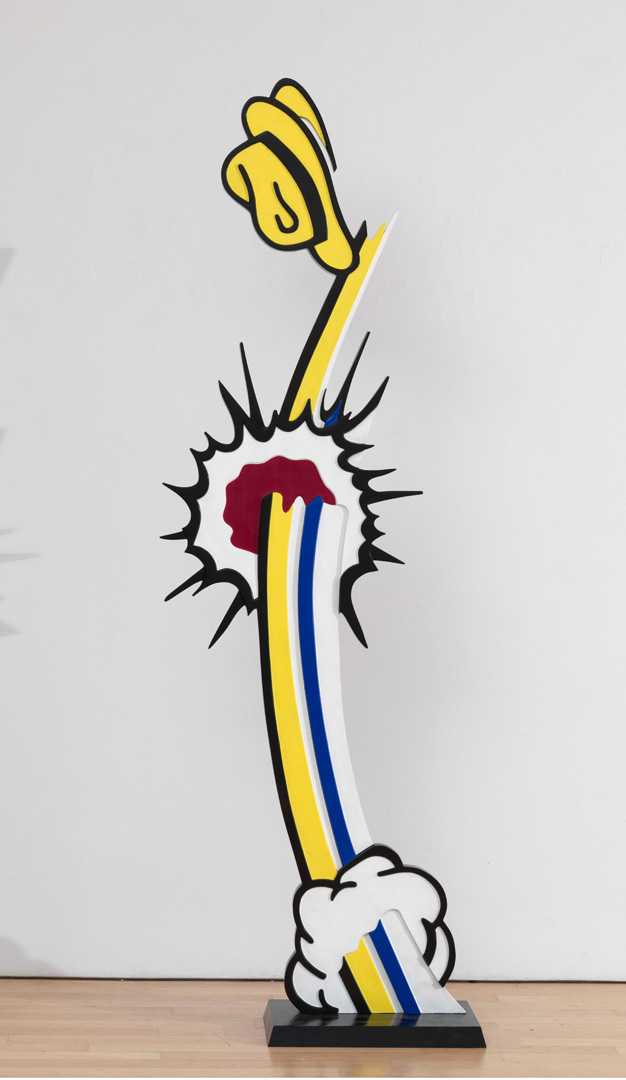


Most of Lichtenstein’s works can be found in the United States of America, for example at the Museum of Modern Art(MOMA) and the Morgan Library and Museum in New York. In Europe we have many works scattered in major museums in capital cities, especially in Germany where a large collection with works such as Blonde (1965), Cup and Saucer I (1976) and Tall Mountais (1996) can be found at Museum Ludwig in Cologne. In Europe there are also major public sculptures such as Barcelona Head (1992) in Barcelona, and Coups de Pinceau (1988) located in Paris. In Germany at Heinrich-Heine University in Düsseldorf is a public mural, University of Düsseldorf Brushstroke M ural (1970).
In Italy you can see Purist Painting with Bottles (study) (1975) at Casa Cavazzini, Museo d’Arte Moderna e Contemporanea in Udine, while at the Gori Collection in Pistoia is Still Life with Dossier (1976). Two works are at the Museo di Arte Moderna e Contemporanea di Trento e Rovereto(MART): Hot Dog (1964) and Large Spool (1963).
 |
| Roy Lichtenstein, comics and Pop Art: life, major works, style |
Warning: the translation into English of the original Italian article was created using automatic tools. We undertake to review all articles, but we do not guarantee the total absence of inaccuracies in the translation due to the program. You can find the original by clicking on the ITA button. If you find any mistake,please contact us.